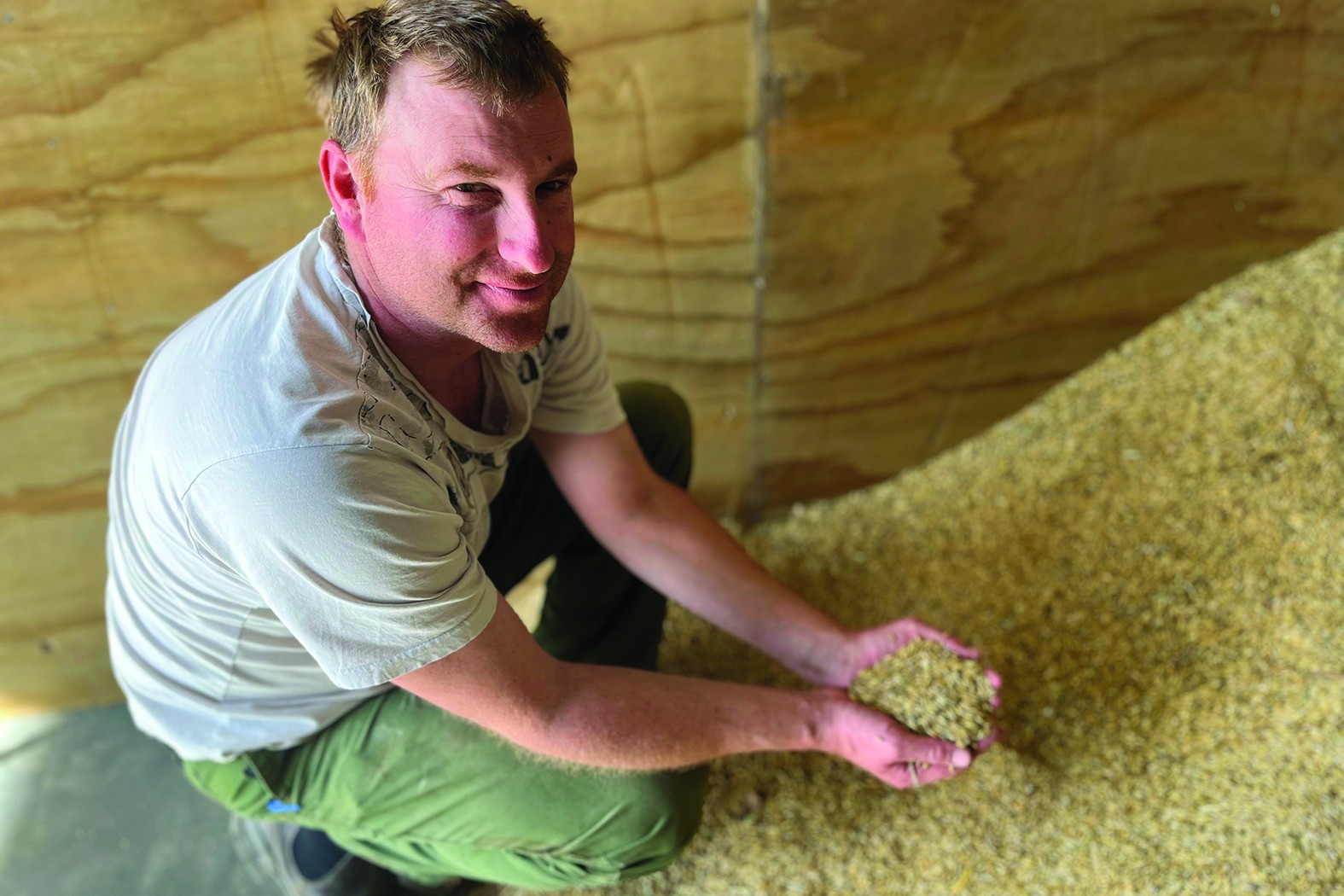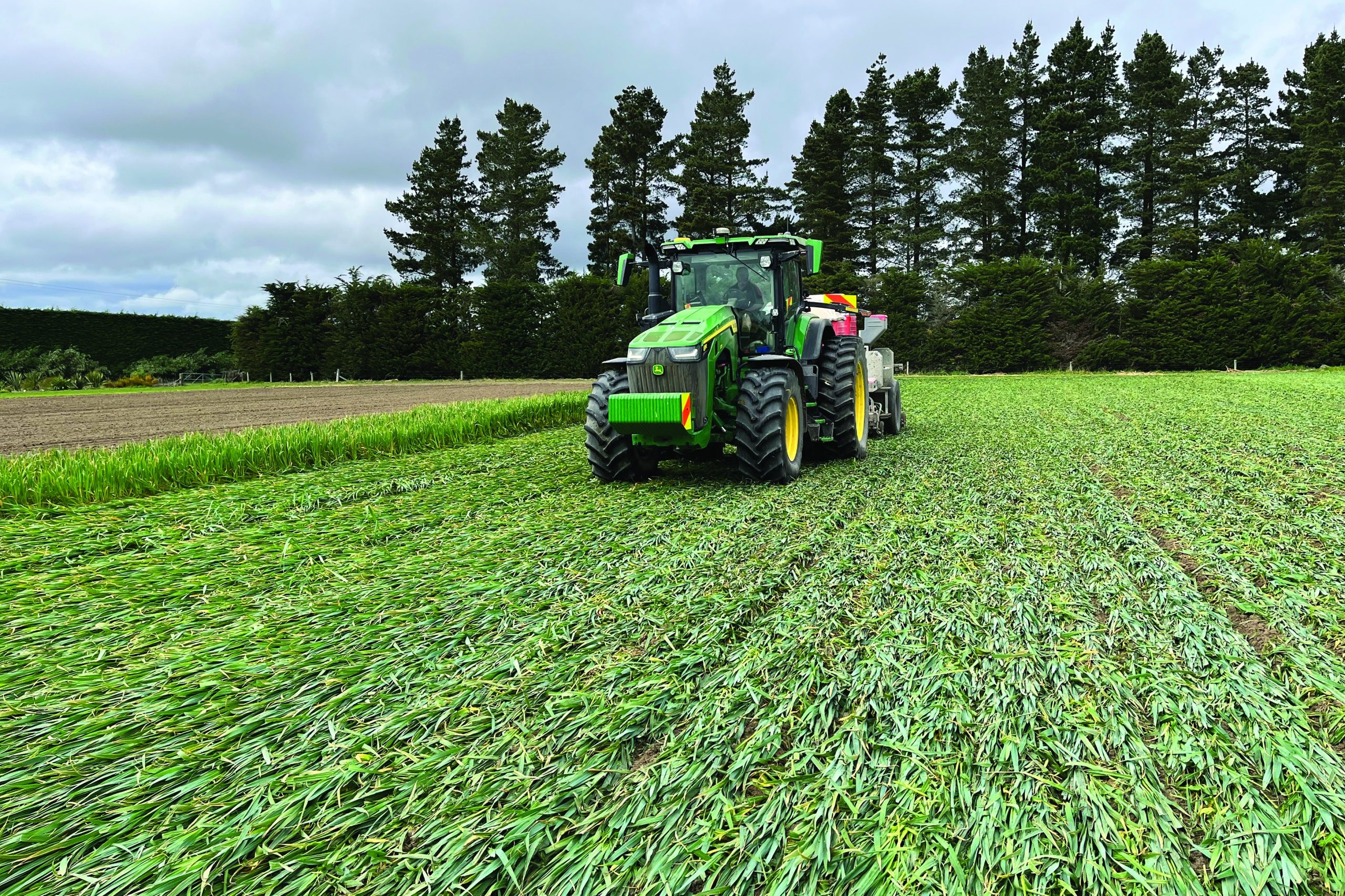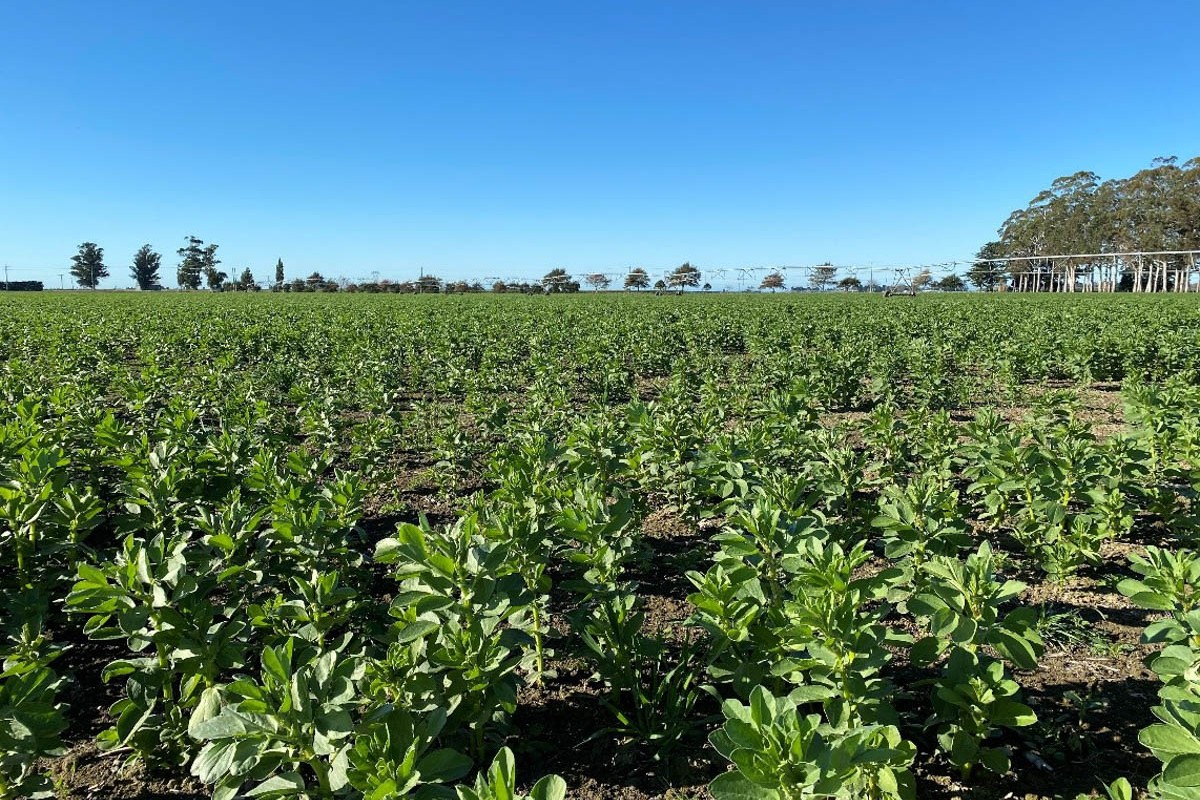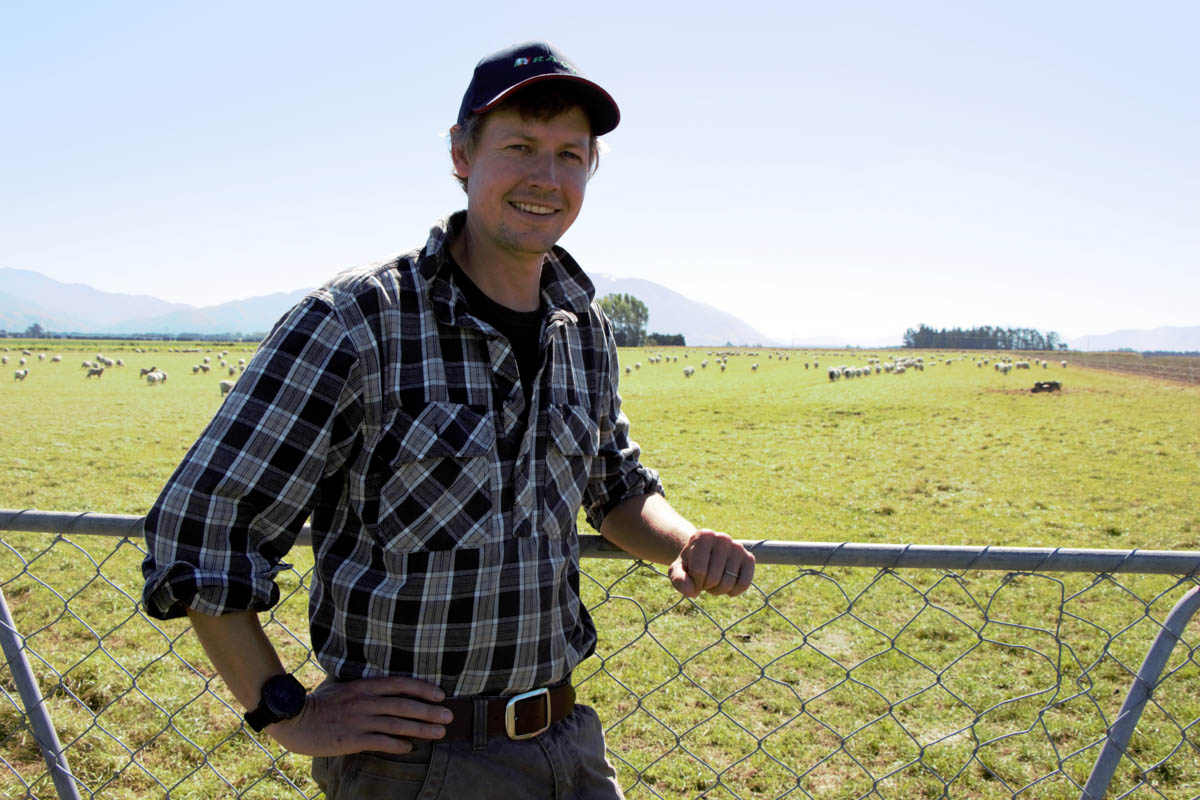The battle against wilding pines in the Mackenzie Basin is never-ending, but Hamish Smith is taking a innovative approach to tackling them. Lynda Gray reports.
Wilding pines, the curse of the Mackenzie Basin were the motivation for ryecorn-based development at Ben Dhu Station.
The ryecorn-to-lucerne and lucerne-mix pastures have pumped up performance and more than doubled income per stock unit to $150 in less than 12 years, a commendable achievement in what Hamish Smith says is a brittle environment.
When Hamish and wife Pip moved there in 2006 they were well aware of the wilding tree problem: Pinus contorta had self-seeded and growth was rampant on the flats around the woolshed. The initial plan of attack was to plough the rogue pines under and follow on with fertiliser, seed and fencing.
“I wanted to run a low-cost operation but it soon became evident that this approach wasn’t going to work here,” Hamish says
In short, the pines were beating the plough, but other factors were making the Smiths reconsider the traditional cultivation-based development approach, such as the mounting red-tape and conditions around Department of Conservation consent for burning off undeveloped land.
They realised a better path was a soil and moisture conservation approach based on ryecorn and lucerne.
Hamish had limited experience with the green-feed cereal but was impressed with its growth and performance at nearby Simons Hill Station. From small beginnings – the direct-drilling of 7ha in 2007 – he’s fine-tuned an eight-to-10-year rotation starting with three years of ryecorn then a lucerne or lucerne-based pasture mix.
Pure lucerne is grown on the lower-lying lighter sandy silt loams around the woolshed and house. On the heavier terraces a lucerne mix is grown; a SF Force4 lucerne, Relish red clover and SFGreenly cocksfoot performs well in the dryland environment and holds on into autumn providing valuable shoulder season feed.
Every year 75-80ha is under ryecorn development. About 25ha of undeveloped land is brought in to the rotation; 25ha is grazed, sprayed out, fallowed then resown; and the remainder grazed, sprayed, fallowed and replaced with a permanent lucerne mix.
Drilling of ryecorn starts in late December and continues through until early February. The staged sowing means it can be better managed. The seed is bought locally, unscreened and direct drilled at 100kg/ha along with 100kg/ha of DAP. The green feed works out at about $550/ha to establish (including fertiliser).
Successful management hinges on planning and fallowing.
“The fallowing is really important because conserving every drop of moisture is key to the success of the following year’s crop.”
However, the need for moisture retention was not an issue this season given the 245mm rainfall compared to the usual 100mm average from September until mid-November.
Ryecorn is easy to grow and manage so long as it’s kept under control in spring, and that’s where three stock classes come in handy. Merino ewes are set stocked on it after mid-September, giving the high country they’d normally have gone to a rest.
From early October hoggets get their turn, grazing 13ha split into four blocks from.
When the crop starts to lose quality, Angus cows and calves are brought in to graze it off. It’s a win-win, the cows get good lactating tucker and once again are giving the high country they would have once grazed a break. When the cattle have grazed out the crop, it’s sprayed and left fallow.
Keeping up with the development and in sync with the feeding requirements of the various stock classes is a juggle.
“It’s taken years to build the system and looking back it’s been difficult to build a more intensive and three stock class operation from what was initially a high country run with 11 blocks and a deer farm,” Hamish says.
But ryecorn has been the breakthrough and will continue to be the basis of development.
Merino U-turn
Ben Dhu was running a Merino flock but the Smiths decided to switch to Perendales. They weren’t their dream breed but, with no resident sheep at takeover, they were a way to get started. The crossbred path made sense given the depressed prices for fine wool and was also a way of mitigating the footrot risk. But what seemed like a smart move backfired horribly.
“After three years we found that the Perendales were eating us out of house and home. They weren’t suited to the feed growth curve of the property, were making big holes in the fences and leaving their wool on the matagouri. We’d underestimated the harshness of the property and didn’t have enough developed land to sustain them.”
They did a U-turn back to Merinos with the help of Alan and Simon Paterson, Armidale Merino Stud, and built a store lamb and hogget system based on 3200 breeding ewes. Alan Paterson helps Hamish every year class and select replacements for the breeding flock.
“He’s a great mentor and often tells me not to be so tough on selection. He’s a great one for saying ‘we can work with that ewe’ whereas I’m more likely to get rid of it.”
The ewes last year generated about $290/head based on a 5kg 18-19 micron fleece and a $110 store lamb.
Over the last two years all ewe lambs have been taken through the winter. At shearing the replacement ewes are selected and the rest are sold on the store market. Last year 520 hoggets, at a liveweight average of 33kg, sold for $132/head and on top of that was an extra $50 for wool clipped.
“We never used to have any income in early spring so they’ve become an important source of cash flow.”
Merinos work in well with the Angus cows which replaced an allsorts breeding herd. As with the sheep side, Hamish has a close working relationship with their bull supplier.
“We’re loyal Stern Angus customers and have been for the last 13 years. We’ve found their genetics work for us.”
The cows consistently wean 250kg calves with limited supplement feed, and play an important role in pasture control.
Heifers are calved, it’s pushing the boundaries, Hamish says, but works well thanks to the ryecorn. About 40 heifers are selected each year and after weaning are break-fed ryecorn with balage until spring. They go to the bull at about 380-400kg and then graze the hill country until calving. Those that don’t rear a calf are sold. Calves are sold at the local Omarama autumn sale where prices over the 12 years have ranged from $317 to $1035, averaging about $650.
“We’re price takers at the end of the day but they’re an important part of our farm income.”
There’s a good sheep, beef and deer balance but Hamish says Ben Dhu is capable of pushing out more production per hectare.
“The different income streams have helped us greatly. We’ve lifted performance and we’ve been able to capitalise on commodity prices, particularly velvet and fine wool. But we can push it further.
I think ryecorn, feeding and genetics will always be our keys to success.”
Deer have been longstanding income contributors at Ben Dhu.
Velvet overtones
The Smiths inherited from the previous owner Don Ross a hybrid breeding herd run in an easy-care extensive system, turning out store weaners for autumn sale and velvet. They continued with the same system but after four years started looking closely at velvet and hind production.
“We realised that our hinds weren’t that efficient given the weaner weights. We also felt that we’d lost the velvet genetics and probably hadn’t been making the right choices when buying stags.”
They took action, largely due to encouragement of the deer industry Mackenzie Basin Advance Party they joined. They started by buying stags and replacing the hybrid hinds with R2 and mixed-age hinds with velvet genetics from Peel Forest Estate. Hinds also came from Forest Road Farm in Hawke’s Bay. Also, the Smiths made the decision to DNA parentage profile hinds and their offspring so they could be more selective in breeding, especially for velvet.
At a Mackenzie Country Advance Party regional workshop Peel Forest’s Mark Rapley quantified the costs and benefits of the genetic investment. The set-up costs of buying Gallagher TSi software and a wand, and the DNA testing of breeding hinds and fawns born in 2016/17 would be covered by an extra 135kg of velvet, or half kilogram from each stag assuming a price of $140/kg.
The $4000 cost of DNA profiling 140 weaners each year would be covered by an extra 110g from each stag. The pen and paper estimate was well and truly eclipsed this season with the 70 two year olds in 2018 cutting an extra 800g more than 2017, conservatively netting an extra $8000 of velvet income.
“They’re almost ahead of our three-year-olds so it’s giving us a great pool to select replacements from.”
He says the renewed emphasis on velvet suits Ben Dhu because the stags feed demand matched the feed growth curve.
High country hankering
Both the Smiths come from South Canterbury farming backgrounds. Pip’s parent’s Jim and Anne Murray were third generation runholders of Glenmore Station on the western side of Lake Tekapo, and Hamish’s family farmed crossbred sheep and cattle at Albury.
Hamish always hankered for high country farming and worked at Glentanner, Godley Peaks and several back country stations. They got their break into the high country with financial backing from both families, buying Ben Dhu in 2006. It’s brittle dark-facing country – Ben Dhu is Gaelic for dark hills – rising from 550 metres above sea level at the woolshed to about 1400m into the Ohau range.
Outstanding
A large chunk of the south-west corner of Ben Dhu is being developed through a sharefarming arrangement with a local contractor.
Since 2011 about 160ha has been sown in lucerne-mixes through barely and triticale seed crops. The contractor covers growing costs and fertiliser, and the Smiths take care of fencing. The area is subdivided into 20ha blocks which will be further downsized to 8ha on the next round of development.
FARM FACTS
- Ben Dhu Station
- Hamish and Pip Smith
- Charlie Kennedy (full-time employee)
- 550 – to 1400m asl
- Rainfall 650mm
- 3500ha dryland developed /semi-developed terraces and tussock and matagouri hill country.
- 2100ha of oversown/top-dressed sheep and cattle blocks
- 580ha of oversown/top-dressed deer blocks
- 400ha of lucerne mix pastures
- 8000 SU (sheep 57%, deer 26%, cattle 17%)
- Main income streams: Merino wool, store hoggets and store lambs; velvet and store hybrid weaners; store Angus weaners.




